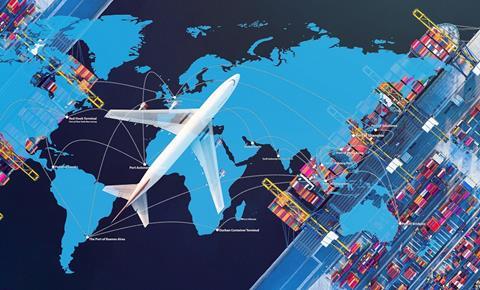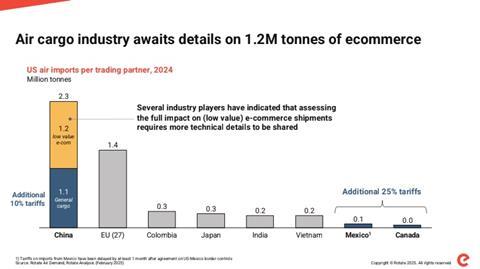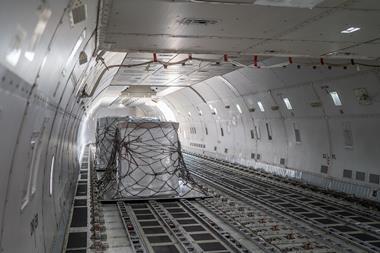
Air cargo stakeholders are in a state of tense apprehension as they await updates on global tariffs from the US and there is uncertainty about what developments mean for the industry.
A flurry of activity from The White House yesterday saw president Donald Trump announce executive orders for an additional 10% tariff on imports from China, a 25% additional tariff on all imports from Canada and an additional 25% tariff on Mexico.
The China tariffs will impact the de minimis exemption on goods included in the list (see below).
However, the latter two countries have since struck deals with the US that mean the tariffs will be at the very least delayed by one month.
Further, Trump has also said tariffs will be applied to imports from the European Union (EU), but suggested a deal may be worked out with the UK.
For the air cargo industry, tariffs are fresh in memory. When Trump implemented tariffs on Chinese goods in 2018 and later Europe, it caused a rush of air cargo ahead of their implementation before contributing to a quiet year for air cargo demand in 2019.
Following in the footsteps of Canada, which announced 25% tariffs on $30bn in goods imported from the US before a bargain was struck between the two countries, China has retaliated against its 10% tariff by introducing tariffs of its own against the US. These include levies of 15% for US coal and liquefied natural gas (LNG).
One bright spot in the gloom is that countries where goods transit through tariff-hit countries are unaffected, though compliance with tariff rules is important to avoid extra charges, noted Flexport.
The supply chain logistics platform said: “Note that only goods whose country of origin is affected by the tariffs will be impacted—not goods that only transit through affected countries.
“Additionally, there won’t be any retroactive tariffs before February 4, but anything after that date may be subject to retroactive tariffs if the systems aren’t in place to implement immediately.”
Meanwhile, US shippers using ocean freight will feel the strain of increasing costs due to the combination of US tariffs on China, in addition to increases in ocean container freight rates due to conflict in the Red Sea, said Xeneta.
Peter Sand, Xeneta chief analyst, pointed out that any benefits of ocean container rates reducing as a result of ships returning to the Red Sea following the Israel-Hamas ceasefire will be more than offset by a 10% increase in tariffs.
And unlike the 2018 trade war, shippers will have had little time to rush through imports and build up stock inventories, while shifting supply chains from China to elsewhere in Asia also takes time.
Sand remarked: “US Shippers are being hit by wave after wave of disruption and spiralling costs to import goods.
“They have already faced massive increases in ocean container freight costs due to conflict in the Red Sea and now they are hit with a 10% hike in tariffs on imports from China."
“You struggle to see how a business can absorb these costs without increasing prices for the end consumer.”
He added: “A delay in tariffs on Mexico is welcome news but it does nothing to ease concerns over the reigniting of the US-China trade war, which represents risk at an altogether different order of magnitude.”
How valuable is e-commerce?
In addition to the overall impact of tariffs, e-commerce trade remains a concern for those in the air cargo industry.
On the subject of how the end of the de minimis exemption will impact air cargo shipments, all eyes are on China due to its high volumes of e-commerce exports.
Yesterday Trump announced that the exemption, which permits imports under $800 without duties, is being eliminated for all goods from China that are hit by the tariffs.
This will also apply to goods from Mexico and Canada when, or if, the tariffs on these countries are implemented.
Data from Rotate shows that last year the US imported 1.2m tonnes of e-commerce from China, highlighting just how significant e-commerce trade is by volume, despite its value being less than other types of goods.
Taking into account both volume and value, Rotate pointed out that stakeholders in the industry have “indicated that assessing the full impact on (low value) e-commerce shipments requires more technical detail to be shared”.
E-commerce aside, Rotate’s data showed that in 2024 the US also imported 1.1m tonnes of general cargo from China.
A further 1.4m tonnes of cargo was imported from the EU, for which of course industry is currently awaiting news of tariffs.
In comparison, volumes of imports from other countries, including Mexico and Canada (see Rotate chart) were much lower.



















